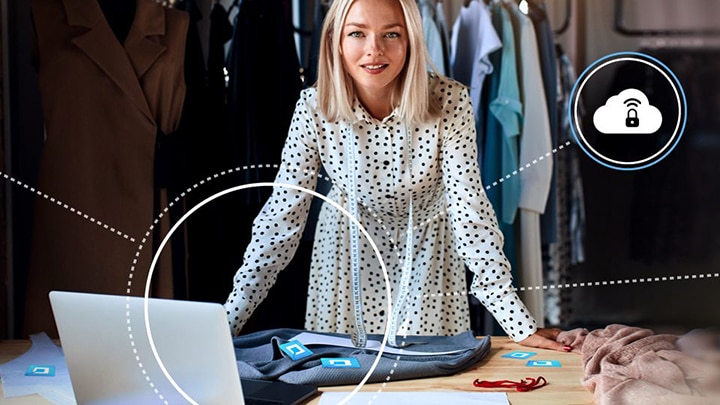Hotels around the world have, for decades, used cards with magnetic stripes as room keys.
They’re inexpensive and easy to issue, but they have serious limitations when it comes to
security, interoperability and ease of use. They can be erased, leaving guests locked out and are
vulnerable to being copied or forged, which can lead to unwanted consequences.
Two newcomers to the field – Near Field Communication (NFC) and Bluetooth Low Energy (BLE)
– give hotels an alternative to mag-stripes and, at the same time, make it easier to meet
guest demand to use smartphones and other devices as access credentials. NFC and BLE offer the
benefits of mobile integration and an enhanced guest experience, with greater convenience and
security and also enable new services.
NFC and BLE are compatible technologies that can coexist in the same components, so
implementations can be very flexible. For the time being, BLE is supported by more mobile devices,
but this is changing. NFC, which is based on widespread contactless smartcard technology, is on
the rise. It’s designed for higher security and uses protocols that are form-factor
independent. Also, since NFC is the predominant technology for public transport, shared mobility
and various other applications, it offers options for extending the capabilities of hotel keys.
What this adds up to, is increased use of NFC for hotel cards, driven by three things:
- Multi-application support
NFC is designed to support multiple applications in one card or device, so a single card or device
can be used to open doors, make payments, earn loyalty points, rent a bike, access a rental car,
access local public transport and more. Hotels can enhance guest experiences through more
services, and can pursue cross-branding opportunities to expand their offering. Since NFC-based
cards and devices can be configured multiple times, for different purposes, add-ons can be earned
through rewards programs or paid subscription, and the card system itself can accommodate new
features and functions over time.
- Form-factor independence
NFC cards, smartphones and wearables can all be processed by infrastructure devices, such as
locks, in the same way. This facilitates the coexistence of different form factors, making the
integration of a loyalty card or a mobile device much simpler. Instead of dealing with multiple
technologies, solution providers and hotel operators can focus on their main objective —
guest satisfaction. The wristband or smartphone app can be configured for partner services, for
discounts at local restaurants, shops, museums, amusement parks, sporting venues and other
attractions. Location services can be added, too, so families and groups don’t get lost,
even in large resorts.
- Higher security
Because NFC is based on contactless smartcard technology, it’s designed for scalable
security. NFC cards and devices support a wide range of globally accepted countermeasures against
common attacks:
-
Mutual Authentication is used to establish a trusted communication channel between the
lock and the card or device.
- Message Authentication Code protects each message in a communication.
-
Data Encryption is used to protect data on the contactless interface from
eavesdropping.
Through the support of state-of-the-art cryptographic algorithms, like 3DES and AES, guests and
their valuables are protected with the same high level of security that banks use to protect
financial transactions.
The NXP approach
As the global innovation leader for secure connections, NXP supports both technologies –
NFC and BLE – and supports secure, convenient, and cost-effective usage of both
technologies. For example, our MIFARE family, which is fully compatible with NFC, offers
high quality solutions for guest cards and loyalty cards.
MIFARE options
-
MIFARE Ultralight EV1
The most cost-effective solution for limited-use applications.
-
MIFRAE Ultralight C
Designed as a limited-use, high-volume IC, it uses the open 3DES cryptographic standard for
chip authentication and data access, and provides entry-level security for key storage and
authentication.
-
MIFARE Plus SE
This latest version of MIFARE, which is a competitive alternative for existing MIFARE Classic
systems, makes it possible to increase security in systems that are already in use.
-
MIFARE DESFire EV1 256B
MIFARE DESFire EV1 is the global benchmark for multi-application solutions, and this upcoming
entry-level version offers a wide range of available applications, including integration with
banking cards and mobile cards.
Contactless infrastructure
Our extensive portfolio of NFC-compliant devices enables migration to newer technologies. We
support standardized, generic data structures and protocols. The products most often used in
hospitality are the PN512, CLRC663 and CLRC630.
BLE integration
With the family, NXP has a competitive offering for BLE integration. Targeting applications like
wearables, IoT and smart home, QN9000 devices are designed for ultra-low power consumption and
high sensitivity and use a system-on-chip (SoC) design to enable high levels of integration.
Join the conversation
Have you stayed in a hotel that uses NFC-based room keys? Where do you think NFC will take hotel
access? And how might you use NFC to make hotel stays better?
Related links
Explore the world of MIFARE
MIFARE
NXP’s NFC Everywhere TechZone
NXP high-performance MIFARE reader solution MFRC630
NXP full NFC Forum-compliant solution PN512
Smartcard Alliance




